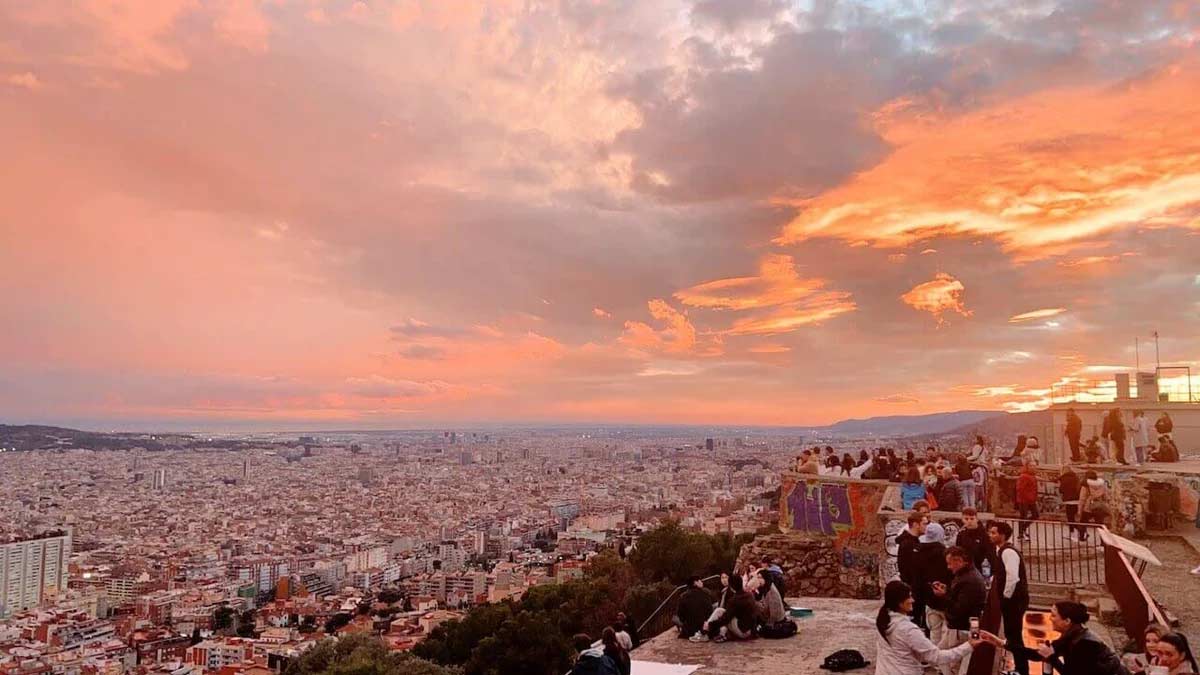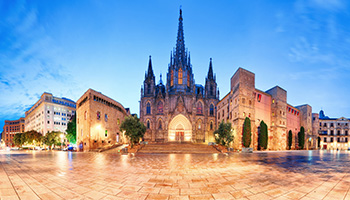When you study abroad in Barcelona, there are a few cultural celebrations throughout the country that are worth looking into attending while you're in Spain!
Here are seven local celebrations for your list.
1. SEMANA SANTA
A religious festival, Semana Santa (Holy Week) is a big deal in Spain. It commemorates the Passion of Christ in the Catholic tradition the week before Easter. Each region has its own distinct traditions, but flamboyant parades fill the streets all over the country with festivities beginning on Palm Sunday and finishing with dramatic processions on Maundy Thursday and Good Friday. You'll see life-sized floats of biblical characters being carried through the streets, people walking with crosses or candles and religious spectacles throughout the week.
2. Carnival
If you want to celebrate Carnival in Spain, hop on a flight to Tenerife in the Canary Islands and head up to the capital city, Santa Cruz. It may be small in size, but each February the island hosts the largest Carnival celebrations in the world after Rio de Janeiro in Brazil. For two weeks, you'll find street parties packed with revelers in colorful costumes dancing into the earliest hours, plenty of loud music to keep them moving and the vote for the carnival queen from a number of contestants who show off their elaborate outfits. Watch for the Ash Wednesday tradition, "entierro de la sardina" or the "burial of the sardine" during which a giant sardine made of paper is carried along in a "funeral procession" and people dressed as wailing widows follow along, pretending to mourn.
3. LA TOMATINA
The Valencian town of Bui±ol is bathed red with squashed tomatoes during La Tomatina on the last Wednesday of August. Everyone gathers and an hour-long fight ensues, with tomatoes being smashed before they are thrown to limit injuries. The yearly tradition happens in the town square. It began in 1945, was banned in the 1950s then reinstated in 1957. While it was once a free-for-all, it is now well-regulated and promoted by the tourism board. The mess, as you can imagine, is unbelievable, but it is cleared away by fire truck hoses and, bonus-the citric acid in the tomatoes actually gives everything in the an extra thorough clean.
4. THE FALLAS OF VALENCIA
For five days and nights in March, the people of Valencia are joined by visitors from around the world for a continuous street party known as "the fire festival." A bit of history: The festival commemorates Saint Joseph, the patron saint of carpenters. In the Middle Ages, carpenters would hang planks of wood to support their candles while working. These would be burned in the spring to celebrate the end of the darker winter days. They later added clothing to give their planks personality and everything unfolded from there into what it is today-the burning of giant figures ("˜ninots')-often well-known politicians or celebrities. At 8am, brass bands and firecrackers wake the city. Cue days full of processions, fireworks, and plenty of noise. It culminates with the explosion of ninots that have been stuffed full of fireworks"¯in the Plaza Ayuntamiento, the street lights switched off and firefighters in position. The festival has been included in UNESCO's Intangible Cultural Heritage of Humanity list.
5. ESTA MAJOR DE GRACIA
In August, blocks compete to win a prize for the best decorated streets around the neighborhood of Gri cia in Barcelona. Each year there's a different theme. High standards have been set, creativity and originality reign and the competition is fierce with canopies of decorations hanging above you between the buildings and continuing onto balconies. It becomes a week-long street party and is accompanied by about 600 concerts, workshops, parades, and other activities and events. Keep an eye open for the famous and impressive castellers who assemble themselves into human towers. There's an emphasis on community here and you'll likely find long tables in the streets so everyone can enjoy traditional Catalan food together.
6. SAINT FERMIN AND RUNNING OF THE BULLS
A rocket launch in Pamplona on the 6th of July marks the beginning of San Fermin, a 9-day festival which includes its most famous event, the running of the bulls. Over 1 million people attend what has become one of the most popular festivals in Spain, spread to the English-speaking world through Ernest Hemingway's The Sun Also Rises in which the festival is central to the plot. There are processions, traditional dances, and plenty of noise-especially during El Struendo ("The Roar") when people gather at the town hall and, for several hours, make as much noise as possible. The festival culminates with the singing of Pobre de Mi"¯("Poor Me"), candlelight and fireworks.
7. DIA DE LOS REYES MAGOS
Though Santa makes an appearance in many Spanish households these days, traditionally, it was the Three Kings who brought the gifts-not on Christmas, but on January 6th which marks Dia de los Reyes Magos, or "Three Kings Day", also known as Epiphany. Celebrations begin the day before with a parade re-enacting the arrival of the Three Kings. Children leave a shoe out for the Three Kings and awake in the morning to find the presents near their shoe. Families gather to share a rosci³n de reyes, a traditional cake for the day. It's also known as a tortell in Catalonia. Hidden inside is a fave bean and a small king. Whoever gets the king will have good luck for the rest of the year. Whoever gets the bean has to pay for the cake.









